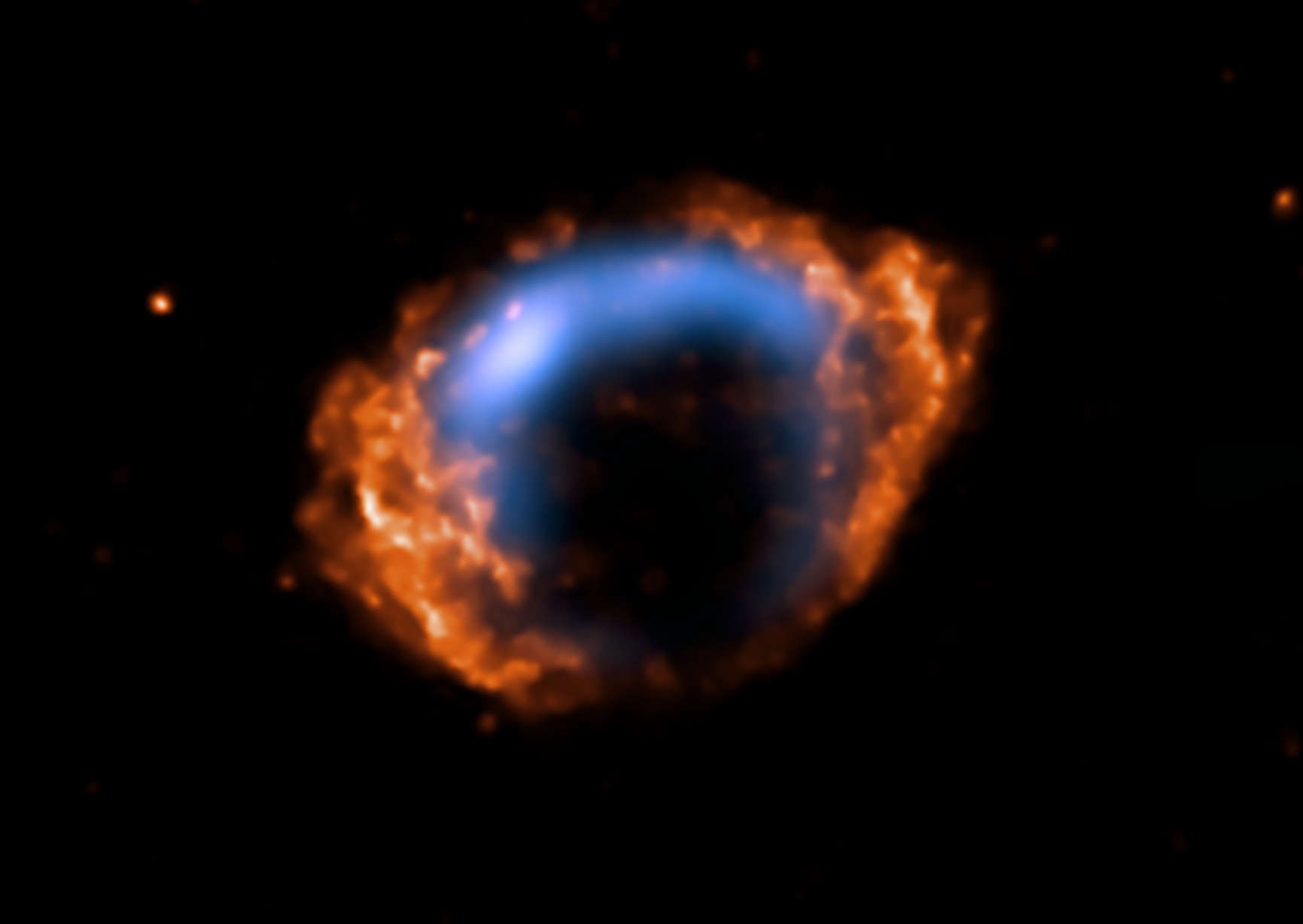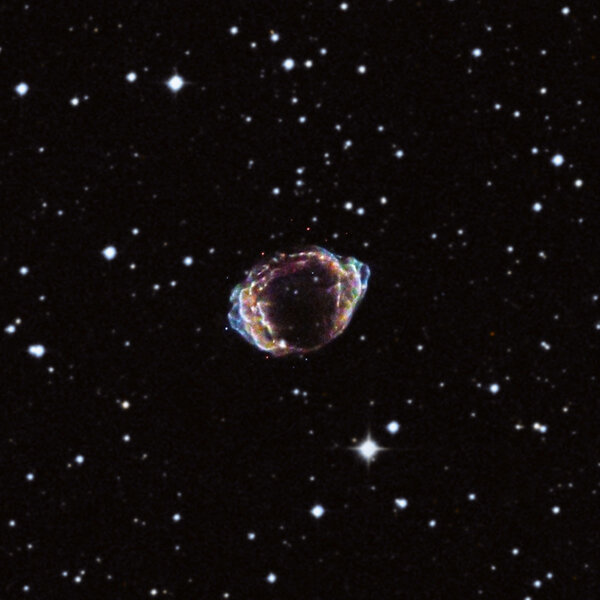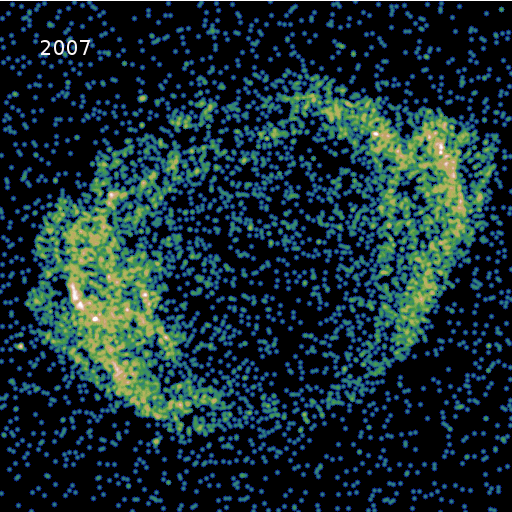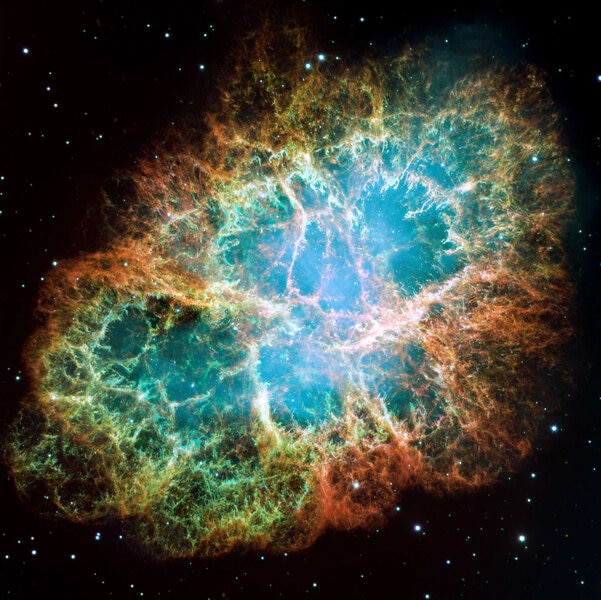Create a free profile to get unlimited access to exclusive videos, sweepstakes, and more!
G1.9+0.3: The last galactic supernova

When was the last supernova in our galaxy?
This questions sounds straightforward but it’s actually a little bit convoluted to answer. But just a little, so sit back and let’s talk about a science communication mistake, light travel time, and what happens when an entire star explodes. Sometimes two.
So. I recently wrote about a stellar explosion 900 years ago called Supernova 1181, and how astronomers have finally identified the expanding debris from that catastrophic event.
When I wrote about this on Twitter to promote the blog article, I said there have been no supernovae seen in our galaxy since the invention of the telescope:
But that’s wrong!
He’s right; the supernova G1.9+0.3 is far more recent, and in fact I mention this supernova in passing in an article I wrote in 2020. That means I’ve known about this supernova for some time but I simply forgot about it when writing that tweet. Oops.
So what’s the deal here?
Very roughly speaking, we expect that there’s one supernova explosion in our galaxy every century. That’s an average, and could easily be more or fewer. The last one definitively visible by eye (that is, without a telescope of any kind) was Kepler’s Supernova in 1604. I say “definitively” because the light from the explosion that generated the famous Cas A supernova remnant probably reached Earth around 1680, but there are no definite observations of it despite calculations showing it should have been visible. Why no one saw it is something of a mystery.
Still, it’s been 400 years. The odds of no supernova going off in our galaxy in that time are low, though not ridiculously so.
And, it turns out, there was one.
In 1984 a pair of astronomers wrote a paper noting that given how many supernovae should go off and how many we’ve seen, there may be a lot of them in the galaxy we haven’t noticed. When a star explodes (whether it’s a massive star undergoing core collapse or a low-mass white dwarf accreting too much material and detonating) a lot of very hot debris is flung outward very rapidly. We call this expanding material the supernova remnant.
These remnants glow fiercely in visible light, but they emit light at other wavelengths as well, including radio waves. A nice feature of radio is that it can penetrate the muck floating around between stars, stuff that absorbs visible light, dimming distant supernovae debris. So the astronomers looked at radio wave surveys of the galaxy and found 32 objects that looked like they could be from supernovae, and then observed them with radio telescopes at higher resolution.
Most of them turned out to be extragalactic sources (galaxies outside our own), but two looked like supernovae — and of those two, one turned out to be an external galaxy as well! So of all those objects, one was in reality the expanding debris from an exploded star.
They dubbed it G1.9+0.3. It shows up as a shell-like structure in radio waves, a bubble. It’s very close to the direction of the center of the galaxy, and they were not certain what its distance was. They also couldn’t determine its age, though they could estimate it was under a thousand years old.
Follow-up observations over the years, including more radio observations together with a series of Chandra X-ray Observatory images taken over time, showed that G1.9+0.3 was around 100 to 150 years old. The distance is around 28,000 light years, and about a dozen light years across.
The age was estimated by seeing the remnant physically expand over time. Even from half a galaxy away, the material screaming outward from the supernova explosion at 14,000 kilometers per second gives a measurable expansion to the debris. Subsequent work points toward the explosion being due to two white dwarfs colliding; their combined mass was enough to cause the material in them to undergo catastrophic thermonuclear fusion, releasing colossal amounts of energy, and then, well, kablooie.
The rest is literally history.
So G1.9+0.3 was the last supernova seen in our galaxy from Earth. But was it the last supernova in the galaxy?
After all, while its light first reached us a little over a century ago, it’s about 28,000 light years away. There have probably been 300 or so supernovae in the galaxy since then!
Imagine this: At the exact same time the supernova G1.9+0.3 went off, another one exploded, but 150 light years on the other side of it from us. The light from that supernova won’t reach us for 30 or so more years, so we wouldn’t see it until 150 years after we saw G1.9+0.3, even though they exploded at the same time. Or worse, it could have exploded 30 years earlier than G1.9+0.3 and the light might reach us tonight.
So what you might think is the newest supernova is just the one whose light reached us the most recently. In an absolute frame of reference where you see the whole galaxy at once, that changes.
But it’s way worse than this. There is no absolute frame of reference for the whole galaxy. The galaxy is 120,000 light years across and you literally cannot see the whole thing simultaneously. We see local space kinda sorta as it is now, but we see the other side of the galaxy as it was about 85,000 years ago, more or less.
And even that’s not really true, because there is no real “85,000 years ago” in this sense. It gets ridiculously complicated quickly, involving special relativity and past light cones and very importantly simultaneity, all of which will seriously mess with your mind — but still, I encourage you to read about them. Relativity is pretty cool.
But what they point to is that, in a very real sense, we cannot judge when an event happened in an absolute sense, and the only way we can place events in chronological order is to judge them from our own frame of reference. In this case, that means when the light from that event reached Earth.
Thinking about it that way, G1.9+0.3 is the last known supernova in our galaxy. If the light from 300 more supernovae is on its way here, then we’ll judge them as they come in.
First come, first supernovaed.
My thanks to astronomers Kazik Borkowski and Stephen Reynolds for their help here, especially for sending me the wonderful animation of the expansion of G1.9+0.3 in X-rays.






























